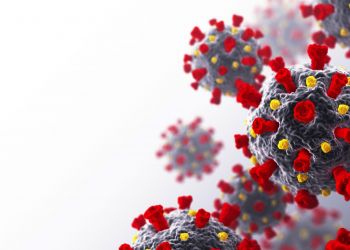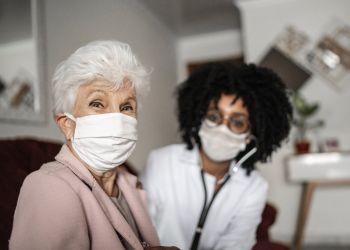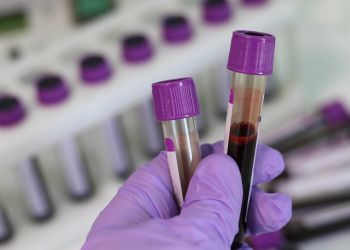Rapid antigen tests emerged
in the summer of 2020 as powerful tool to diagnose and screen for active COVID-19 infection. Antigen tests diagnose active COVID-19 infection quickly, usually within 15-30 minutes. They are also relatively inexpensive and easy to perform. The strengths of antigen testing mean congregate settings, including nursing homes and schools, increasingly use them to inform infection prevention and control efforts that stop transmission of SARS-CoV-2. New rapid antigen tests continue to receive emergency use authorization (EUA) from the Food and Drug Administration (FDA). As of June 7, 2021, the FDA approved EUA for 28 SARS-CoV-2 antigen tests.
Specificity refers to how well a test correctly identifies people without COVID-19 as negative. Sensitivity is how well a test identifies people with COVID-19 as positive for COVID-19.
Antigen tests and molecular tests, the other type of diagnostic test for COVID-19 infection, have similar specificities. However, antigen tests generally have lower sensitivities than molecular tests. Because antigen tests produce more false negative results than molecular tests, confirmatory tests may be needed.
Reporting results of diagnostic and screening tests for active COVID-19 infection informs a data-driven response to the global pandemic. The Coronavirus Aid, Relief, and Economic Security (CARES) Act requires all CLIA-certified laboratories and testing sites report diagnostic testing results to the Secretary of the Department of Health and Human Services (HHS).
HHS requires sites to collect and report standard data for all diagnostic and screening tests. These data get to HHS through multiple mechanisms. For example, long-term care facilities can submit data to CDC’s National Healthcare Safety Network, the nation’s most widely used healthcare-associated infection tracking system. Testing sites can share test results directly with state or local health departments, as required by state and local law, and the ways in which they report these data varies by jurisdiction. Some jurisdictions have online portals where sites can upload test results. Others allow sites to upload data using an electronic form, like REDCap. Once with the state or local health department, they share de-identified data with the CDC.
Testing sites in settings that traditionally have not administered diagnostic and screening tests may have more difficulties navigating reporting requirements than sites with experience collecting and reporting test results. However, barriers to reporting can occur at testing sites in all settings. Minimizing those barriers will ensure the quality and timeliness of reporting.
The Pima County (AZ) Health Department partnered with the United States Digital Service (USDS) to implement two USDS-created systems, SimpleReport and ReportStream, to ensure complete and accurate reporting of rapid antigen test results from testing sites across Pima County. SimpleReport and ReportStream are part of the Pandemic-Ready Interoperability Modernization Effort (PRIME).
- PRIME is a multi-year collaboration between the CDC and USDS focused on helping public health departments save time, streamline reporting, enhance the use of data, and increase readiness.
- SimpleReport is a free web-based application that allows sites conducting rapid antigen tests to manage their testing workflow and report results to local or state public health departments, depending on the jurisdiction.
- ReportStream is a cloud-based system that cleans and routes data from senders, like SimpleReport, to health departments.
NACCHO spoke with Kat Davis, Congregate Care Program Manager at the Pima County Health Department, about Pima County’s experience working with testing sites and USDS on reporting results of rapid antigen tests.
Pima County’s Experience Reporting Rapid Antigen Tests
Facilities performing laboratory testing in Arizona must report all COVID-19 test results to the Arizona Department of Health Services (ADHS). In a letter sent on April 10, 2020, ADHS also required long-term care facilities to immediately report positive cases of COVID-19 to their local health departments. Prior to some testing sites implementing SimpleReport and ReportStream, they reported results differently to the ADHS and Pima County. This dual reporting, Davis said, could be burdensome for testing sites.
“The reporting to ADHS was through a Google form, so [sites] had to put in all of the test results one at a time for every single person,” Davis said. “[In Pima County, at the start of the pandemic,] sometimes we would get an Excel, sometimes a PDF, sometimes handwritten notes that were scanned to us, it was a myriad of things.”
Testing sites reported similar, but not identical, rapid antigen or point-of-care test results to the ADHS and Pima County: testing sites reported all results to the ADHS and only positive tests to Pima County. Epidemiologists at the Pima County Health Department received testing data from the ADHS through a system called MEDSIS. Davis and the Congregate Care team, however, did not have access to MEDSIS. They had access to the positive test results sites shared directly with Pima County. The Congregate Care team and epidemiologists constantly communicated to ensure each team could access the data needed for routine surveillance and outbreak identification.
“It’s like two routes of reporting,” Davis said. “Our epidemiologists got a report through MEDSIS. If they had questions, they reached out to [the Congregate Care team] and we looked at the line-list data we received from testing sites. What we were asking for was more information than what was in MEDSIS. We could then work together to give them the information that they needed.”
As the availability of rapid antigen tests increased, Pima County incorporated them in its robust testing program. Pima County encouraged congregate facilities to use rapid antigen tests for routine surveillance and serial testing, given their speed and cost. Conducting a high volume of tests and reporting the results of those tests took substantial staff time.
“Really our biggest concern was that we wanted to save the facilities time because they were so overwhelmed,” Davis said. “The reporting to us is kind of their last priority. We want data that is usable, but we also want to save the facilities time because them spending hours and hours every week reporting is just not a good use of their time. It’s just not sustainable for the facilities.”
SimpleReport and ReportStream help Pima County achieve the goals Davis outlined: saving testing sites time when reporting test results while giving Pima County staff accurate and comprehensive data.
“[With SimpleReport and ReportStream], we get the data that we need in a timely manner that is complete and accurate data, and it’s saving our facilities time,” Davis said. “I think those were the biggest things that we wanted.”
SimpleReport and ReportStream also help allay Davis’s fears of Pima County Health Department staff not having timely access to the data they needed.
“My fear was that if [testing sites] were not reporting to the county, they would only be reporting to the ADHS. Our epidemiology team would get that information, but [the Congregate Care team] would have no way to access those data. We’d be kind of cut out a loop and wouldn’t really know what was going on with the facilities,” Davis said. “That was one of the big advantages to ReportStream: the data gets sent to the state, but also gets sent to us, and anyone at our Health Department can sign up to get access to that information. Every single day we get a report through ReportStream instead of having to wait for those data to come into MEDSIS. It just allows us to react and respond much quicker to the needs of our facilities.”
Overall, Davis said streamlining rapid antigen test reporting through SimpleReport and ReportStream helped Pima County more effectively combat COVID-19. Davis hopes SimpleReport and ReportStream can be used to modernize reporting of other communicable diseases going forward.
“Working with the USDS has been a really positive experience for us throughout this whole process. My hope is that SimpleReport and ReportStream can be expanded beyond COVID-19 and used for lots of different types of communicable disease reporting.”



